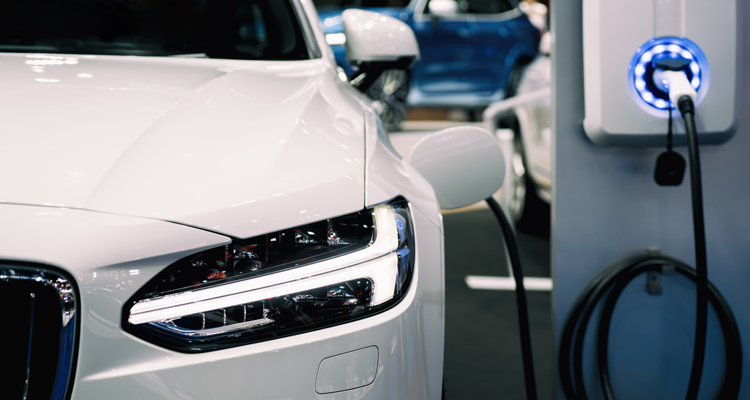
When there’s an Electric SUV Expo visiting Melbourne, you know we’ll be there.
The three-day event, hosted by Future Drive Auto, featured displays from big names in EV, like BYD and Polestar, as well as Chinese manufacturers looking to establish themselves in the Australian market. Interestingly, Tesla and MG were absent from the lineup.
By far, the most popular display was certainly the AEORHT XPENG X2 – a flying electric car from Chinese brand Xpeng, which made its Australian debut at the expo. Taking center-stage, the flying car was the focus of many attendees and shared extensively on social media. It certainly left our team wondering - will flying cars become a reality sooner than we think?
We also had the pleasure of hearing from industry experts at the panel events, on topics like the FBT exemption for EVs, state-based government rebates and sustainable manufacturing, charging and maintenance of EVs. A common theme from the presentations was the push from industry experts that we need to electrify everyone, charge green and de-carbonise the way we make cars – the road to true sustainability.
Here are four key takeaways from the expo, and what they mean for us, as Interleasing, and importantly, for our clients and their drivers
1. Luxury SUVs lead the charge
The current EV SUV market mainly consists of luxury car brands, whose vehicles have many premium features, not all of which are necessary for mainstream fleets. Luxury vehicles also can’t benefit from the EV Discount, as the fringe benefits tax exemptions only apply to vehicles under the Luxury Car Tax threshold, which is $91,387 for fuel-efficient vehicles as of 1 July 2024.
That being said, many fleet managers have been able to make further progress in electrifying their fleet and helping their organisation meet ESG targets, thanks to the tax savings on offer associated with the EV Discount.
What this means for fleets: While luxury SUVs may not be the right fit for your business requirements right now, the sector continues to evolve and invest in innovation, driver experience and releasing new models, and keeping close to market developments could be beneficial to your business down the road.
2. Cars are becoming a third space
A ‘third space’ refers to the concept of an area where people hang out that isn’t their home or place of work. This may be a park or café, but for many people this place for relaxation has become their vehicle. For example, we heard of a new app for the car created to assist a sales rep to get into the right mindset before entering a prospect’s office.
EV innovation is recognising the increasing importance of modern cars providing more than just a way to get from A to B. It’s important for fleet managers to be aware of this shift and provide drivers with vehicles that could serve as this third space, where they are spending significant amounts of time, either on the road, or when parked.
What this means for fleets: Vehicles are more than just a means of transport; they become an extension of our teams and can empower employees to focus on their jobs, which can also contribute to enriching the overall driver experience.
3. Moving towards a future of smart cities
Many of the panel speakers discussed Vehicle-to-grid(V2G) technology and its potential. Cars with V2G capability can push energy back into the grid through bi-directional charging. EVs can act as a power source for small equipment around the home, like BBQs, but have the potential to go all the way to powering a city in a blackout.
Elsewhere, AI continues to be a hot topic, as solutions are being introduced to process large volumes of data in real-time. An example raised at the event was a tool to help drivers find empty car parks - helping drivers make informed decisions, and hopefully avoid parking-induced stress.AI is also being explored by organisations to through telematics to generate predictive maintenance alerts and optimise driver safety
What this means for fleets: While we in Australia are still a while away from the vision for smart cities, compared to some in North America or Scandinavia, it was encouraging to hear that our industry leaders are preparing for a safer, smarter future. In the meantime, speak to your RM at Interleasing to learn more about how you can get more from Telematics – or check out this case study with Dotmar.
“The Electric SUV Expo reminded me of Melbourne auto shows of the past. I hope it continues to be an annual event. There’s significant government investment in promoting the uptake of EVs. As public charging infrastructure improves, we’ll see range anxiety become a thing of the past. Now’s the time for fleet managers to prepare for an electric transition.”
Anthony Perri, General Manager, Sales & Client Relations, Interleasing
The Expo was an exciting look into the road ahead for electric vehicles. But as we always say, the transition to EVs will be a marathon, not a sprint. A partner like Interleasing can provide dedicated support and guidance for every step of the transition.
For more information about Interleasing’s 3-step EV transition framework, download our guide here: A Roadmap For Australian Fleet Managers To Transition To EVs.


